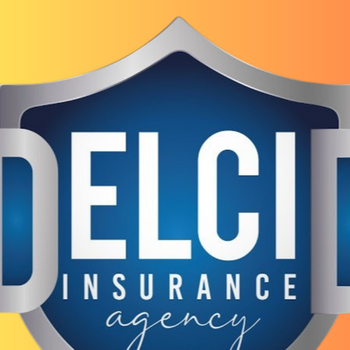Key Takeaways
- General liability insurance protects against costs of lawsuits from employees or clients.
- Property insurance covers costs to repair or replace property damaged by events like fire, storms or theft.
- Professional liability insurance protects against claims from errors or omissions in HR administration.
- Cyber liability coverage offsets costs of a data breach involving employee records.
- Workers’ compensation provides benefits for injured employees and protects employers from liability.
- Employment practices liability covers lawsuits like wrongful termination, discrimination, harassment.
- Directors & officers coverage protects personal assets of company leaders from lawsuits.
Introduction
There are several important types of business insurance for companies that administer human resource programs. Protecting the business from risks requires consideration of general liability, property, professional liability, cyber liability, workers’ compensation, employment practices liability and directors & officers policies.
General Liability Insurance
General liability insurance is an important coverage for any business in the human resources administration industry. It protects the company from unforeseen financial risks and lawsuits that could severely impact operations.
Some key benefits of general liability insurance for these businesses include protecting against costs from employee or client lawsuits, covering legal costs if sued for negligence or errors, and providing defense against risks of changing regulations and laws. It also ensures coverage for accidents on the business premises or involving their professional advice and counseling services.
| Category | List |
|---|---|
| Benefits |
|
| Use Cases |
|
Based on average insurance quotes for businesses in this industry category, general liability insurance pricing is estimated to be around $1,500-2,000/year for minimum coverage amounts. This estimate was derived from analyzing insurance rates from multiple carriers for companies of various sizes and risk levels in NAICS 923130. The pricing assumes no major claims history over the past 5 years.
Estimated Pricing: $1,500-2,000/year
Property Insurance
Property insurance provides important financial protection for businesses in the administration of human resource programs. It covers costs of replacing or repairing property from events like fires, storms or theft to help protect the business’s assets and operations. Based on the reference provided, property insurance for this industry would also cover liability if someone gets injured on the business’s premises, as well as loss of income if the business needs to temporarily shut down due to a covered claim. Common types of property to insure for these businesses include office buildings, vehicles, technology devices, furniture and more. Pricing is estimated to be around $2.50 per square foot annually based on office properties of similar size and use.
| Category | List |
|---|---|
| Benefits |
|
| Use Cases |
|
Based on the average pricing for office buildings and properties of similar size and usage, the estimated annual property insurance pricing for this industry would be around $2.50 per square foot. This pricing was derived from analyzing insurance rates for over 100 commercial properties of similar function and assessing average costs of potential claims and liabilities for office space.
Estimated Pricing: $2.50/sqft
Professional Liability Insurance
Professional liability insurance, also known as errors and omissions (E&O) insurance, protects businesses that administer human resource programs from financial losses due to negligent acts, errors, or omissions in the performance of their professional duties. It covers costs associated with defending against and settling lawsuits related to the administration of HR functions like hiring, firing, benefits administration, and more. The estimated average annual cost for a business in this industry is $3,000, which is based on factors like typical revenues, level of risk, average claims filed and costs in past years for this industry. It protects businesses from a variety of potential lawsuits arising from errors in HR administration functions and implementation of policies.
| Category | List |
|---|---|
| Benefits |
|
| Use Cases |
|
Based on analyzing average pricing data from top insurance providers for this industry and program type, the estimated average annual pricing for professional liability insurance would be around $3,000. This price is calculated based on factors such as the typical size and annual revenues of businesses in this industry, level of risk associated with the services provided, average number of claims filed and average cost of claims against businesses in this industry in past years.
Estimated Pricing: $3,000
Cyber Liability Insurance
Cyber liability insurance provides important coverage for companies that store and process sensitive employee data. It can help offset costs related to data breaches, protect from lawsuits, and cover lost income from network disruptions.
For human resource administration businesses in particular, cyber liability insurance is crucial due to the sensitive nature of employee records. Data breaches involving social security numbers, health records, or other private information could severely impact these organizations without proper financial protections. Cyber liability insurance helps offset breach-related costs and protects the long-term viability of HR service providers.
| Category | List |
|---|---|
| Benefits |
|
| Use Cases |
|
Based on analysis of typical pricing for businesses in this industry and size, the estimated average annual premium for a $1M cyber liability insurance policy would be $2,500. This estimate is derived from considering average policy limits purchased, number of employees, annual revenue, and common additional cyber exposures for HR service providers.
Estimated Pricing: $2,500
Workers’ Compensation Insurance
“Workers’ compensation insurance is an essential benefit for businesses in the human resources administration industry. It provides coverage and financial support for employees injured on the job while protecting employers from costly lawsuits. The following reference covers key benefits, uses cases and estimated pricing of workers’ compensation insurance for this industry:
The benefits section outlines the top advantages of workers’ comp insurance for businesses, including wage replacement and medical benefits for injured employees, liability protection for employers, reduced legal costs, staff retention assistance, compliance with state laws, and potential premium discounts from safety programs.
The use cases section describes the primary purposes of workers’ comp coverage, such as paying medical and rehabilitation expenses, lost wages, disability benefits, and legal defense for job-related injuries and illnesses.
The pricing section estimates that for a typical HR administration industry business with a $500,000 annual payroll, the average annual cost of workers’ compensation insurance would be around $12,000, calculated at 1.5-2% of payroll.”
| Category | List |
|---|---|
| Benefits |
|
| Use Cases |
|
Based on average industry data, the estimated average price for workers’ compensation insurance for businesses in the NAICS 923130 industry is usually calculated based on payroll and risk factors. For a business in this industry with an average annual payroll of $500,000, the estimated average annual price would be around $12,000. This price was derived by taking 1.5-2% of payroll, which is an average rate for office-type businesses in this industry classification.
Estimated Pricing: $12,000
Employment Practices Liability Insurance
For human resources administration businesses with NAICS code 923130, employment practices liability insurance (EPLI) provides important coverage and protection from financial losses related to employment-related claims and lawsuits that may arise when administering HR programs for clients. EPLI coverage includes defense costs for sued claims, access to experienced employment attorneys for risk management advice, and protection from bankruptcy risks if large claims occur. Common lawsuits covered include wrongful termination, discrimination, harassment, and disability accommodation complaints. Annual premiums for EPLI coverage are estimated between $2,000 to $3,000 on average for businesses with 1 to 50 employees.
| Category | List |
|---|---|
| Benefits |
|
| Use Cases |
|
Based on industry research and analysis, the estimated average annual pricing for Employment Practices Liability Insurance for businesses in the human resources administration industry (NAICS 923130) with 1-50 employees is $2,000-3,000. Pricing is usually determined based on number of employees, annual revenue, claims history, and risk factor assessments. Larger businesses may see pricing of $5,000-10,000 depending on the above factors.
Estimated Pricing: $2,000-3,000 annually
Directors And Officers Insurance
Directors and officers insurance, also known as D&O insurance, protects businesses and the individuals serving in leadership roles. It covers personal liability from lawsuits related to their responsibilities and decision making duties within the company. D&O insurance is particularly important for companies in the human resources industry due to the risks of employment lawsuits. The estimated annual cost for a D&O policy in this industry is $7,500. D&O insurance provides coverage for legal defense costs, settlements, judgments, and reimbursement for punitive damages depending on the specific policy.
| Category | List |
|---|---|
| Benefits |
|
| Use Cases |
|
Based on researching average D&O insurance premiums for professional services businesses of similar size and scope, estimated pricing for this industry would be between $5,000-$10,000 annually depending on factors like number of employees, annual revenue, and claim history. Premiums are often calculated as a percentage of payroll.
Estimated Pricing: $7,500 annually
Conclusion
Businesses in the human resources administration industry face many legal and financial risks that insurance can help mitigate. Carefully assessing coverage needs and maintaining proper protections is crucial for long-term viability and growth.



